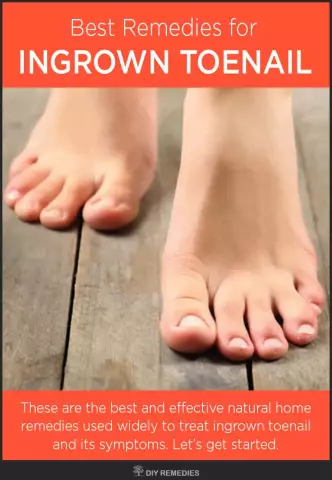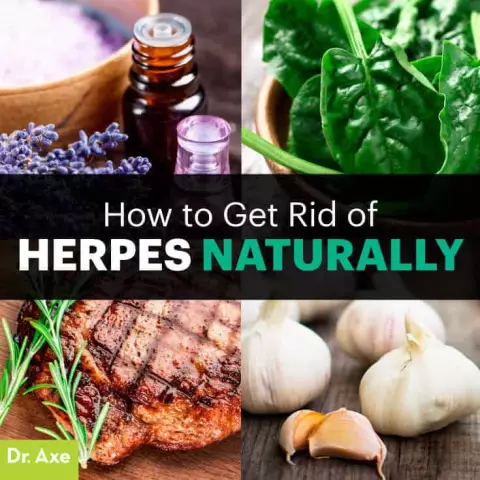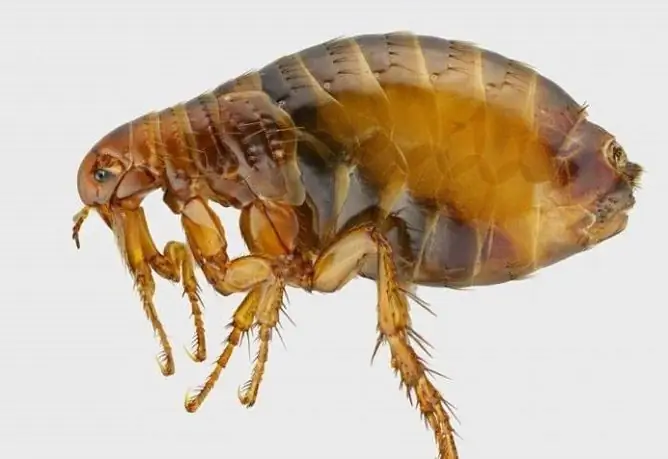- Author Rachel Wainwright [email protected].
- Public 2023-12-15 07:39.
- Last modified 2025-11-02 20:14.
Ingrown toenail: 10 folk remedies to get rid of the problem
The word "onychocryptosis" is unfamiliar to most people. Meanwhile, a very common problem is hidden under it: this is how doctors call the ingrowth of the edge of the nail into the surrounding tissues, which causes an inflammatory process. Usually, the ailment affects the big toes, which is accompanied by redness, swelling, and in advanced cases, the release of pus. Patients complain of pain that worsens when walking, difficulty in choosing shoes.
The reasons for the development of the disease can be different. Most often, ingrowth of the nail plate occurs due to non-compliance with the rules of personal hygiene, wearing too tight shoes, improper cutting of nails. Sometimes the problem appears on the basis of a fungus infection or as a result of an unprofessional pedicure. In any case, the patient is in serious discomfort.
Onychocryptosis is treated surgically, but in the early stages it is quite possible to cope with it with folk methods based on the use of agents that soften and straighten the nail plate. In cases where the procedure consists of applying a compress with a healing ointment to the finger, it must be preceded by a foot bath with any bactericidal agent. As a rule, for this purpose, a solution of furacilin or a decoction of medicinal herbs (chamomile, sage, etc.) is used.
Butter
Let's start with one of the most famous folk recipes. The softened butter is placed in the fingertip, which is pulled over the injured finger after the bath has been made. If the edge of the nail plate is not very close to the skin, you can simply put a piece of cotton wool with oil under it. Pain and inflammation disappear already on the second or third day, and after two weeks of daily procedures, the edge of the nail is smoothed and amenable to normal trimming.
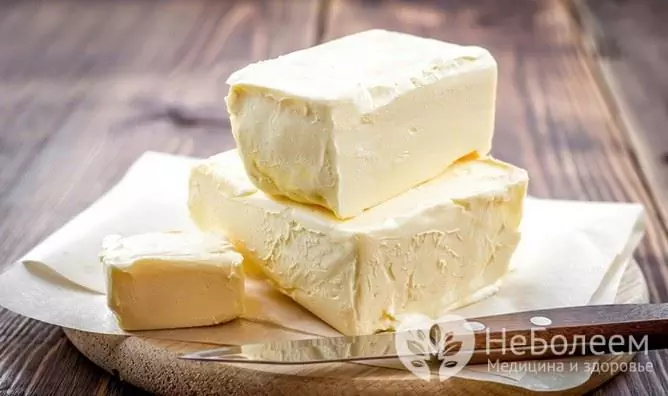
Source: depositphotos.com
Castor oil
For a medicinal bath, dissolve a glass of sea salt in 3 liters of very warm water and add 100 ml of castor oil. Carrying out the procedure every evening, after a few days you will achieve softening of the nail.
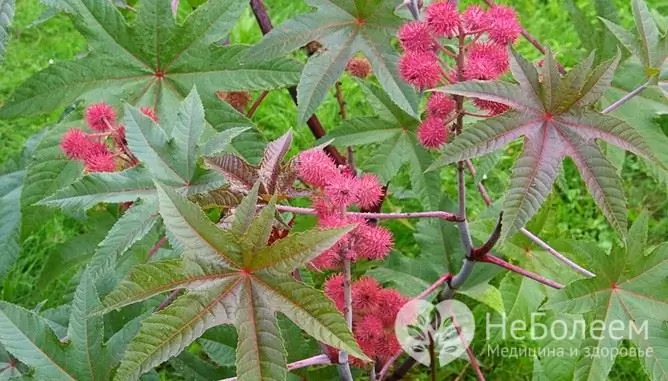
Source: depositphotos.com
Aloe
The remedy is prepared from a plant over three years old. The aloe leaf needs to be crushed. A piece of cotton wool or the pulp of a leaf soaked in the resulting juice should be applied to the finger at the site of the ingrowth of the nail, secure the compress with cling film and leave overnight. The tool perfectly relieves inflammation and helps to straighten the nail plate at the initial stage of the disease.
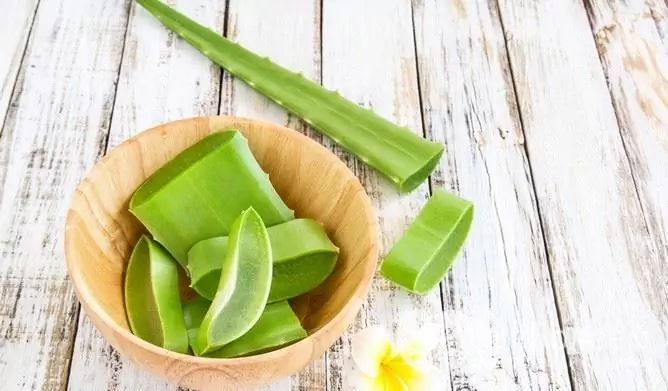
Source: depositphotos.com
Lemon zest
A mixture of vegetable oil and finely grated lemon peel can be applied to an ingrown nail at night. First, the leg must be steamed in a bath with baking soda solution. The result is noticeable the next morning: the nail becomes more plastic; its edge can be gently straightened and cut off.
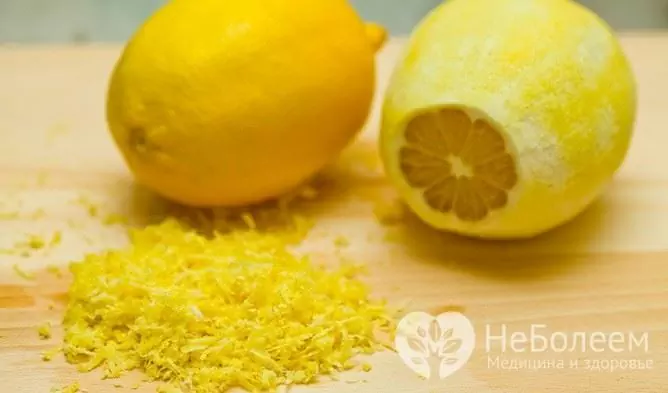
Source: depositphotos.com
Onions with honey
A similar result is obtained when using grated raw onions with the addition of honey for a compress. The mixture is wrapped in gauze and applied overnight to the leg, wrapping it with cling film. The remedy is very effective: it also works in advanced cases, when there is already a purulent process.
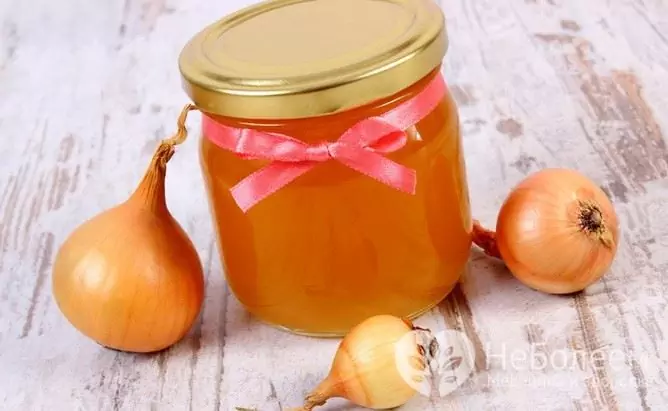
Source: depositphotos.com
Pumpkin
Well helps at the initial stage of onychocryptosis pumpkin pulp, previously steamed in boiling water and rubbed into a gruel. The compress is applied to the sore spot for three to four hours.

Source: depositphotos.com
Lamb fat
A mixture of fat and alkali helps to soften and straighten the nail plate. A well-known folk remedy is prepared as follows: a little grated laundry soap is added to the crushed lamb fat, the resulting mixture is heated and applied to the sore finger, pulling the fingertip on top. So that the fat, while cooling, does not harden, the compress is insulated with cotton wool, a woolen sock is put on the leg and left for five to six hours. The procedure can be repeated until the signs of the disease completely disappear and the healthy nail grows back.

Source: depositphotos.com
Plantain
The well-known weed plant has a strong anti-inflammatory effect. If the ingrown toenail is not yet at an advanced stage, the problem can be eliminated with the help of plantain compresses. Unfortunately, the method is only available in summer, since fresh young plants are needed for the treatment. One leaf should be kneaded, applied to the sore finger and wrapped with a whole sheet of plantain on top, securing it with a bandage or cling film. The compress must be changed daily for a week.

Source: depositphotos.com
Vegetable mix
To prepare a healing ointment, you need to take one tablespoon of grated onion gruel, garlic and aloe leaves, add a tablespoon of butter and a teaspoon of high-quality beeswax. The mixture is heated and boiled for 2-3 minutes over low heat, stirring it with a wooden spoon. An ingrown toenail should be coated with warm ointment, wrapped in a cabbage leaf, bandaged and put on a warm sock. The procedure must be repeated daily until the edge of the nail becomes soft.
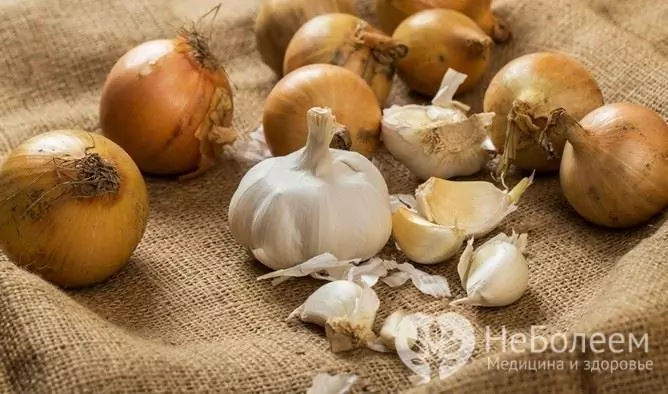
Source: depositphotos.com
Tea mushroom
The body of the fungus is used to soften the nail plate. A thin layer is separated from it, which is applied to the injured finger. Then the leg is wrapped with cling film, a cotton sock is put on, and a woolen sock is put on top. The compress is changed once a day.
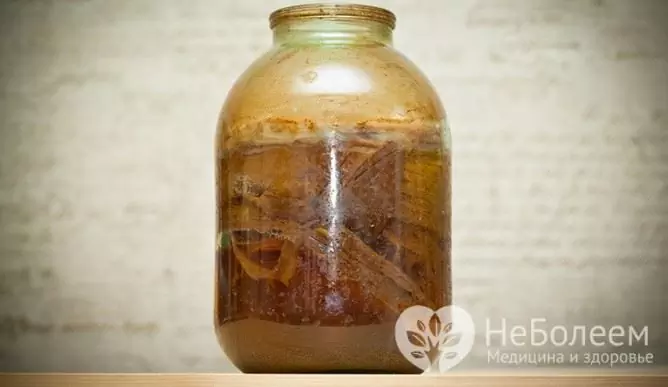
Source: depositphotos.com
Each of the described procedures leads to a decrease in inflammation, as well as straightening the nail and softening its edge, which can then be cut off yourself. It is very important that the ointment is applied to steamed legs. After removing the compress, you need to wipe the skin dry and try to lift the edge of the nail plate by placing a small piece of cotton wool or bandage under it. The nail should be cut in a straight line, avoiding the use of scissors with rounded tips. Otherwise, the plate will continue to grow incorrectly, cutting the edges into the skin. If within a week treatment with folk remedies does not bring relief, you should consult a doctor.
YouTube video related to the article:

Maria Kulkes Medical journalist About the author
Education: First Moscow State Medical University named after I. M. Sechenov, specialty "General Medicine".
Found a mistake in the text? Select it and press Ctrl + Enter.

